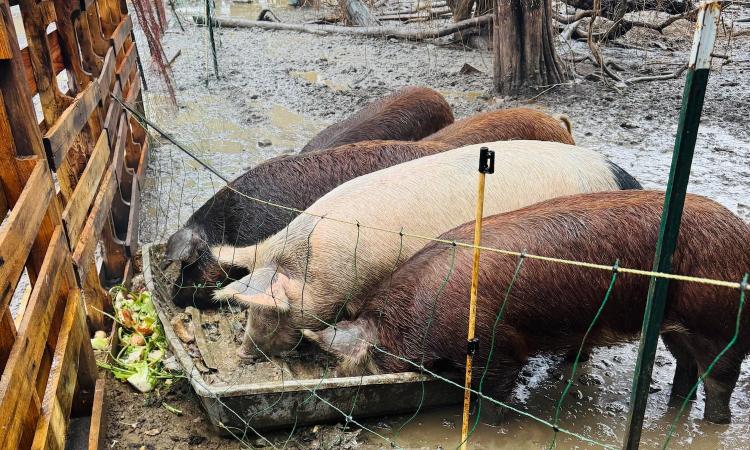The stench is the first thing many people notice. When you live near a CAFO (concentrated animal feeding operation), you know the smell. Thousands of cattle in tight quarters with no grazing and an olympic-sized pool of feces tend to smell…not good. Antibiotics are used liberally to prevent the spread of infection and cattle are fed mostly corn (to fatten them up quickly) or food waste from our modern food system like soy husks and beet pulp. No one really thinks this is the best way to raise beef but as demand continues to skyrocket, providing quality meat has taken a back seat to quantity.
Hong Kong, the United States, Australia, Argentina and other industrialized nations lead the way in per capita meat consumption, but as smaller, less developed nations establish sustainable economies, they are demanding access. Worldwide consumption is expected to continue to rise indefinitely and the timing could not be worse. Animal agriculture is responsible for about 15% of greenhouse gas emissions, roughly the same as the transportation industry. Those swampy faeces-filled swales are often connected to bacterial outbreaks in other food sectors. And the meat itself? Beef from CAFOs is rated as low quality and the animal habitat is widely considered to be abusive. So what's a meat eater to do?

Meet Chad and Kate Muckenfuss, regenerative cattle farmers. Chad and Kate own Medford Cattle Farm, a regenerative farm on the East Coast of the United States specializing in beef, pork, chicken, and eggs. This farm is the same land Chad and his brothers were raised on back when the family farm served up corn and vegetables to the community in the 1970s. Today, 100 of the original 160 acres is in agricultural trust and allows Chad to raise 40 head of cattle, 20 pigs, dozens of chickens for meat and eggs.

Regenerative cattle farming is the antithesis of CAFO farming. Animals graze on pastures divided into paddocks. The cows go first, eating their choice of clover and alfalfa while their hooves turn the soil, mixing in urine, feces, and saliva - all beneficial to the land. The cows leave behind valuable piles of feces that are abandoned just long enough for flies to find them and lay eggs. As the grubs emerge, here come the chickens! The hens eat the fly larvae and further turn the soil as they add their own waste. All this activity and organic debris enriches both the nutrient density and the structure of the soil rather than depleting it as most modern agricultural methods do. Given a break from the cows and chickens for a few weeks, the pasture regrows and waits for the cycle to continue.

So what’s the problem? Let’s just grow all our beef regeneratively and call it a day. Not so fast. The dark secret of regenerative meat farming is that it is not scalable. The acres required to raise meat this way is such that we would need a few extra planet earths to meet demand. CAFOs allow us to meet the staggering need with low quality meat on just a few acres at a time. Regenerative methods require hundreds of acres to create the same supply. Given that the world is out of arable farmland, you begin to understand why Brazil is razing its rainforest to create space for cattle and the acres of forage to feed them.

Here is my recommendation to my meat-loving friends and neighbors. Find your Chad and Kate and “shake the hand that feeds you.” I predict the price of meat will continue to rise, regardless of quality, because demand is going up and supply will plateau. Farms like Medford Cattle Farm are uncommon (less than 5% of meat farms) and you can secure your supply by supporting these farms now. Get to know your local cattle farmer and when supply is low, he or she may well set your portion aside rather than sell to someone else.
If you don’t live near a regenerative farm, there are many who ship. Locate a farm as close as possible that farms sustainable and will ship beef and chicken to your doorstep. You’ll benefit from the best quality meat that money can buy, and you're also keeping a farm in business that is raising the good stuff.


